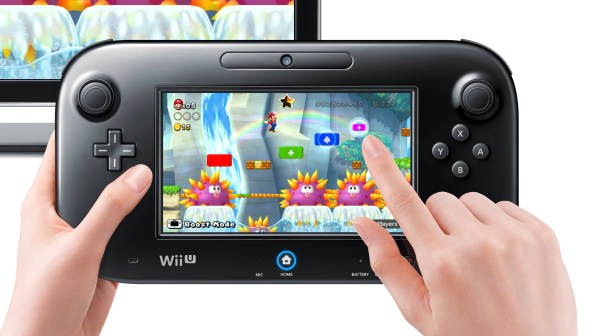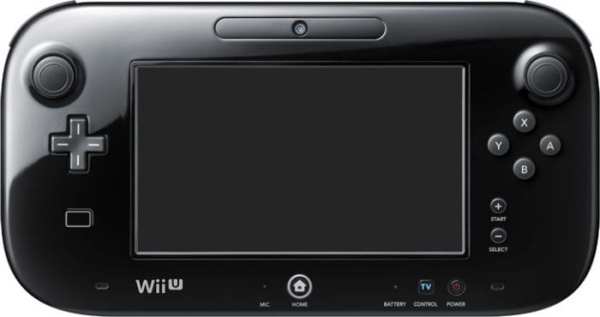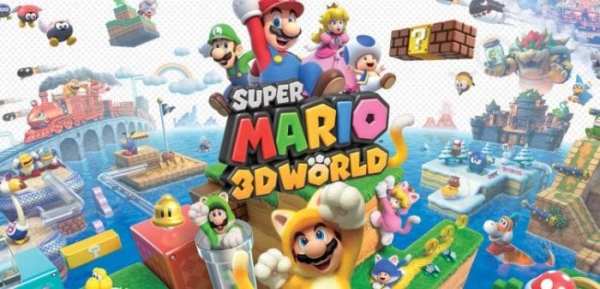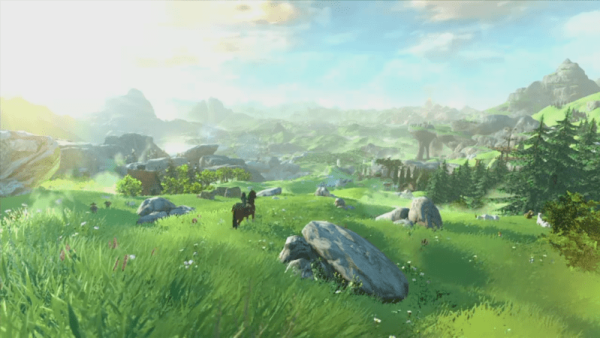
The Wii U has had a bit of a rough time since its release in 2012. Four years later, and it’s sold less than half the amount of units that the PlayStation 4 has, in a shorter amount of time. A lack of third party support, including Ubisoft dropping a lot of their development for the system, only helped make the blow even harsher to Nintendo.
As of now, the Wii U has sold just over 12 million units worldwide, compared to the original Wii’s 100 million and the 3DS’ 50 million. Despite this fact, software sales have been surprisingly high for the system, especially considering the install base.
There’s a few reasons the Wii U may not have performed as well as its predecessors or competing consoles. It may have been a lack of marketing, a lack of understanding on consumers part and a lack of initial software from the get go that showed off the technology not to mention the declining third party support. Despite all this, the Wii U was a surprisingly good console, and over the last few years has seen a great lineup of games.
The Wii U can even be compared to the Sega Dreamcast in many ways. The Dreamcast came out in 1998, a time when Sega was at the top of their game. They’d successfully made a line of video game consoles that could compete with Nintendo, and because of them, “console wars” became a thing. The technical specifications of the Dreamcasat weren’t a substantial improvement over the Saturn, and as hype began to build for the PlayStation 2, it hurt the system. The PS2 was clearly a more powerful system and would go on to see huge success, while the Dreamcast lost the support of big third parties like EA and Squaresoft.
The stories of the Dreamcast and the Wii U are surprisingly similar, and both consoles have come to be appreciated in their own right. In what could be the last year or two of the Wii U, we should take a look at the system and see everything that it actually had to offer. An underappreciated system with an absolutely phenomenal lineup of games. There’s a few aspects to focus on with the Wii U; technology, first party support, third party support and everything still to come for the system.
Technology

The Wii U is an interesting piece of technology, and one with a unique gimmick. Where the original Wii introduced motion control, the Wii U focused on its Gamepad integration. This allowed developers to put aspects of the game onto the pad, as well as give the system the ability to switch the screen for a game from the TV to the pad.
Unfortunately, much of the integration we saw for the game pad initially consisted of inventory management and map systems. These alone are fine, as it helps clear up the HUD in games and can reduce menu navigation. However, Nintendo didn’t really set a great example at the system’s launch for what developers could do with the Gamepad. Later in the consoles life we’d see inventive uses for the Gamepad like Kirby and the Rainbow Curse and Splatton. Mario Maker might even be the perfect example of how to use the Gamepad.
The system also helped strengthen Nintendo’s online infrastructure. The use of friend codes can still be a bit frustrating, but the Wii U’s internet strength is leaps and bounds above the original Wii. The console even had a way to integrate your television’s service, something we’d see again with the Xbox One later.
The Wii U was Nintendo’s first foray into HD gaming, and the company’s colorful cast of mascots has never looked better. The detailed screen of the Gamepad could display the games in almost as much color and vibrancy as your TV screen. This made the console perfect for families, where one party might want to use the TV while anyone playing the Wii U could just switch their game over to the controller and keep going.
The Wii U may have been a step behind when we saw the PS4 and Xbox One release, but many of its ideas were ahead of its time. The Gamepad hit around the time that we saw a prevalence of tablet use and second screen experiences. The technology wasn’t the game changer that motion controls on the Wii were, but gave the system a fresh and unique feel.
First Party Games

Without a doubt, the best aspect of the Wii U has been the incredible library of games that Nintendo has given us. The system might have started out a little slow with only Nintendoland and New Super Mario Bros. U, but Nintendo singlehandedly kept their system afloat.
The last three years have seen countless great titles; Kirby, Pikmin 3, Pokken Tournament, Hyrule Warriors, Super Mario 3D World, Donkey Kong: Tropical Freeze, Xenoblade Chronicles X, Captain Toad Treasure Tracker and more. Two classic Zelda games, Wind Waker and Twilight Princess, returned to the console with updates and an HD polish. We even saw brand new entries in the Mario Kart and Super Smash Bros. series, both of which were received incredibly well. Mario Kart 8 especially has sold over 7 million copies worldwide, meaning literally over half of the people that own a Wii U own Mario Kart 8. Nintendo also implemented full-fledged DLC offerings for the first time.
Mario Kart 8 got multiple packs that added on a healthy amount of tracks and characters. Hyrule Warriors received a ton of new characters, weapons and adventure maps. Super Smash Bros. also surprised everyone by adding on incredibly iconic video games characters with Ryu, Cloud Strife and Bayonetta. The typical Nintendo polish shone through brightly even with DLC.
The Wii U also saw the introduction of an original Nintendo IP that ended up being a smash hit. Splatoon was a fresh take on multiplayer shooters, giving us another set of quirky memorable Nintendo characters. The game still has a dedicated player base, and received constant updates the entire year after its release. The company had created another iconic series for themselves.
First party games have always been the main draw with a Nintendo console, but the Wii U really highlighted that fact with one great title after another. Add on everything from Virtual Console and backwards compatibility with Wii games, and you have a huge library. It says a lot for Nintendo that they were able to keep their console going with practically just their own titles.
Third Party Support

The launch of the Wii U was the start of Nintendo’s problems with third parties. After an initial wave of titles from other platforms like Mass Effect 3, Assassin’s Creed 3, and Batman: Arkham City, the system started seeing fewer titles from third parties.
A few key partnerships with other companies brought some great titles to the Wii U however. An unlikely team up with Nintendo and Koei Tecmo brought us a game that no one ever thought would exist, Hyrule Warriors. A good relationship between Nintendo and Platinum Games also brought two of the system’s best games. The Wonderful 101 was an original title from Platinum, featuring a team of heroes in a mix of strategic and action gameplay. Nintendo would also help bring the sequel to Platinum’s biggest cult classic, Bayonetta.
The title seemed like an unlikely candidate for Nintendo, but Bayonetta 2 became one of the highest rated games of 2014 and one of the very best games available on the Wii U. The console has also had a healthy stream of indie titles over the last few years, some of which have even emulated Nintendo series. Fast Racing Neo released in 2015, drew inspiration from the F-Zero series for its blazingly fast racing. While the third party lineup on Wii U may not come near Nintendo’s own game library, some of the best titles on the system still came from other companies in one way or another.
Everything Still To Come

The Wii U’s life isn’t over yet, and in fact some of its biggest titles are still on the way. Even though the possibility of another Nintendo console looms on the horizon, we shouldn’t forget the Wii U still has a few last hurrahs. Just around the corner, one of Nintendo’s flagship series will return after being dormant for years. Star Fox Zero hits the console next week, along with another title called Star Fox Guard. The new game looks to be one of the best uses of the Wii U’s Gamepad that we’ve seen yet, and features an all new storyline for the Star Fox team.
At a recent Nintendo Direct the company also announced a new Paper Mario game coming to Wii U called Color Splash. This shakes up the formula for the series a bit and leans a bit more towards the action side rather than being an RPG. On the topic of RPGs, Tokyo Mirage Sessions #FE comes to the system in June. This crossover project between Fire Emblem and Shin Megami Tensei brings an original JRPG to the Wii U, with a heavy emphasis on Japanese culture and pop music.
Finally, the end of the year could see one of the biggest titles the Wii U will have period. We’ve all been waiting for years for The Legend of Zelda Wii U, and Nintendo has promised the game will launch in 2016. Coinciding with Zelda’s 30th anniversary, the new title finally puts the series in a fully open world game.
The system may be in its twilight years, but Nintendo fans still have a few great experiences coming to their Wii U. Although it’s been deemed a failure in many ways, the Wii U will undoubtedly be looked back on fondly by anyone that owned one. It had some interesting ideas and gimmicks along with a diverse lineup of titles, and definitely didn’t get its time in the spotlight.
What do you think about the Wii U? Was the payoff worth the slow start for the console, or did you just lose interest in the Wii U overall? Let us know in the comments.